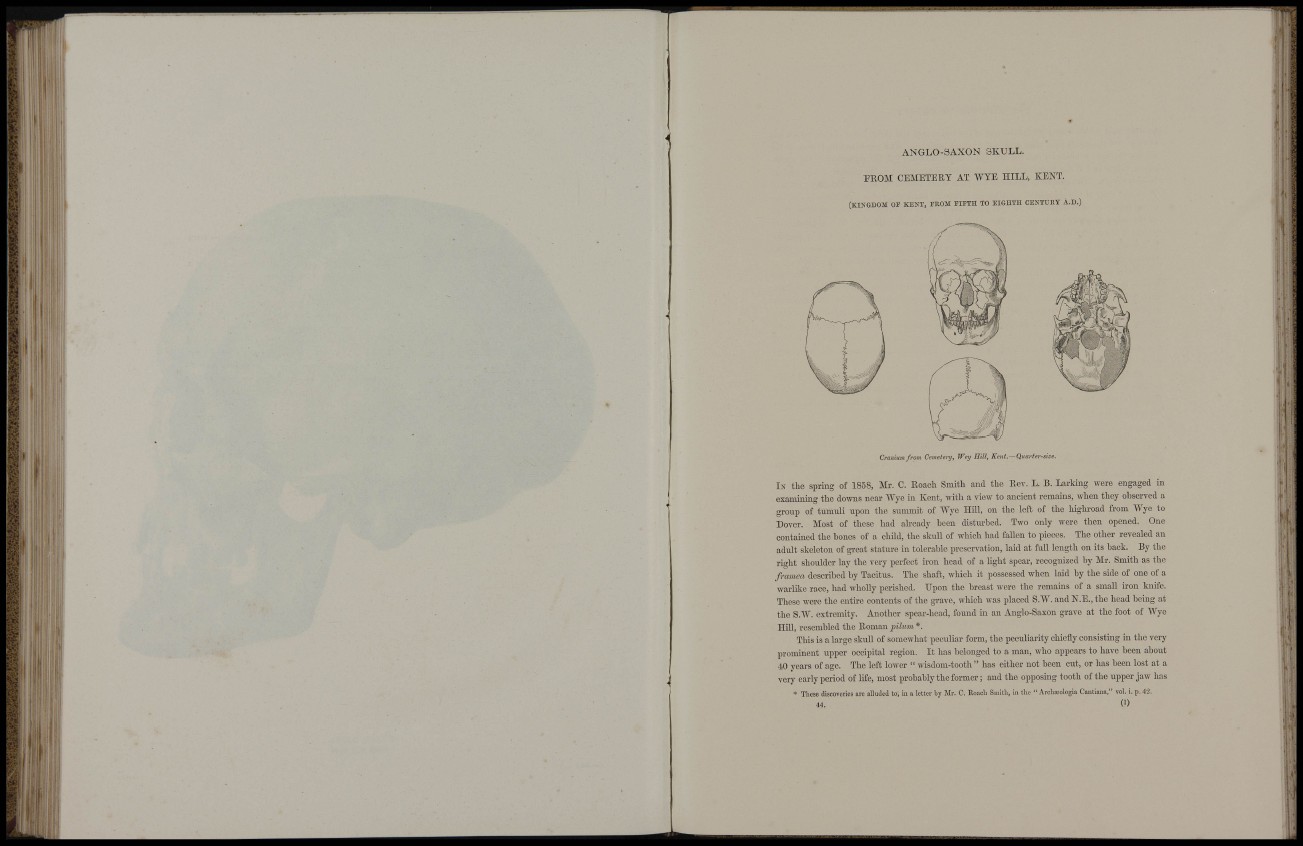
iitll
llj llf^t:
ii«i
•
llili I •
A N G L O - S A X O N SKULL.
PROM CEMETERY AT WYE HILL, KENT.
(KINGDOM OI? KENT, EROII FIFTH TO EIGHTH CENTUIIY A.D.)
Cranium from Cemetery, Wey Hill, Kent.—Quarter-size.
IN the spring of 1858, Mr. C. Roach Smith and the Rev. L. B. Larking were engaged in
examining the downs near "Wye in Kent, with a -view to ancient remains, when they observed a
group of tumuli upon the summit of Wye HiU, on the left of the highroad from Wye to
Dover. Most of these had already been distm-bed. Two only were then opened. One
contained the bones of a child, the skiül of which had fallen to pieces. The other revealed an
adult skeleton of great stature in tolerable preservation, laid at full length on its back. By the
right shoulder lay the very perfect iron head of a light spear, recognized by Mr. Smith as the
framea described by Tacitus. The shaft, which it possessed when laid by the side of one of a
warlike race, had wholly perished. Upon the breast were the remains of a small iron knife.
These were the entire contents of the grave, which was placed S.W. and N.E., the head being at
the S.W. extremity. Another spear-head, found in an Anglo-Saxon grave at the foot of Wye
Hill, resembled the Roman pilum*.
This is a large skull of somewhat peculiar form, the peculiarity chiefly consisting in the very
prominent upper occipital region. It has belonged to a man, who appears to have been about
JiO years of age. The left lower " wisdom-tooth " has either not been cut, or has been lost at a
very early period of life, most probably the former; and the op)posing tooth of the upper jaw has
* Tliese discoveries are nlluJed to, in a letter by Mr. C. Roacli Smitli, in tlie " Arcliceologia Cantiana," vol. i. p. 42.
44. (1)
1I4 •
i:'
J
•i
1 V